In software development, small mistakes can lead to massive disasters.
Typing the wrong line of code can turn an otherwise successful project into a revenue leak, or a non-functional feature can hurt the relationship with a client.
That’s why testing prior to the release of a feature or product is so crucial.
In this article, we’ll show you everything you need to know about test plans — from the definition to the actual creation process.
Let’s dive right in.
What is a test plan?
In software development, a test plan is a document that guides you through the testing process. It’s often created after your team comes up with a test strategy document and defines the estimation of the project.
Test plans are one of the most important “test deliverables” — a series of documents your testing team should provide stakeholders with during the software development life cycle (SDLC).
Since project estimates fluctuate a lot, test planning is rarely a “set and forget” kind of thing. You should constantly update your test plan to adapt to the constantly changing requirements you’ll probably face along the way.
Usually, a test manager prepares the test plan, while testers provide different test scenarios based on the initial test plan document.
A typical test plan answers the following questions:
- What are we testing?
- What aren’t we testing?
- What testing approach will we use?
- What does success look like for us?
- What tasks should we complete during the testing life cycle?
- What is the scope of the overall test?
- Is there any major risk we should be aware of?
Read here for a comprehensive guide to agile testing.
Why is having a test plan crucial for software QA?
QA stands for Quality Assurance. It’s the process of defining specific quality standards and making sure those standards are met when producing products or services.If your quality is lower than expected, it means you’re doing something wrong.
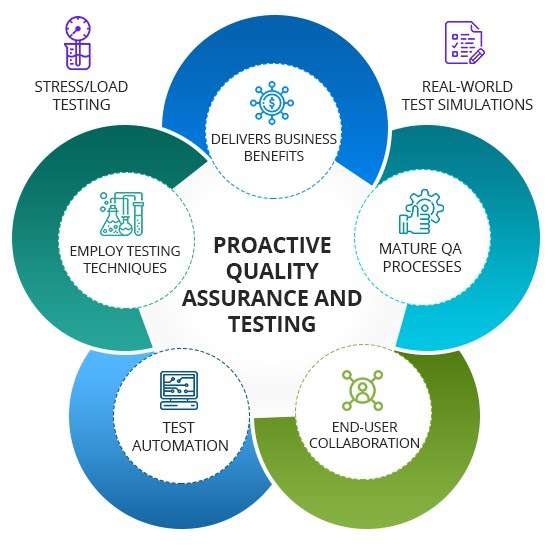
By developing a strategic test plan, you’ll be able to test the quality of the product you’re developing before stakeholders use it. It’s a chance to make sure all the features are functional.
Besides, a test plan will give your stakeholders confidence that you’ll meet all the requirements they asked for and deliver the highest level of quality.
This is absolutely crucial.
With the increasing volume of competitors that modern organizations deal with, standing out in a crowded market is becoming harder and harder.
If you want to stay relevant, you need to do everything you can to earn the trust of your clients. Since your test plan will show stakeholders the process you’re using to test the features, earning that trust will be a bit easier.
Now, we’re not saying a test plan alone is a competitive advantage, per se.
A test plan is more like a requirement for modern organizations — something you need to “continue playing.”
Other benefits of a well-structured test plan include:
- Better alignment: keep your testing team and stakeholders on the same page.
- Fewer misunderstandings: reduce the number of communication conflicts between your team and stakeholders.
- Better products: achieve peak performance in product development.
- Fewer bugs and errors: spot potential problems with your product early in the process.
- Stronger relationships: develop more solid relationships with clients and stakeholders.
- Guidance: get a clear roadmap of action during the entire testing life cycle.
The essential elements of a test plan
Now that you understand what test plans are and why they matter, the question becomes: how can you create a test plan? What should you include?
To help you out, we’ll cover the essential elements of a test plan according to the IEEE 829 standard — the most widely-used standard for software test documentation.
1. Test plan identifier
The first step to creating your test plan is to assign a specific identifier to the document in question. This will help you stay organized and coordinate tests for different features or products more strategically.
Remember, you’ll constantly be updating your software test plan.
By assigning an identifier to your documents, you’ll be able to track the latest version of your plan with more ease.
This identifier should be unique and simple.
For example, “Cross-browser compatibility testing TP.1.”
2. References
Now that you have a test plan identifier in place, it’s time to add references to your test plan. That is a list of supporting documentation for your plan.
Some examples may include:
- Test strategy document
- Project plan
- Resource plan
- Project guidelines
- Use case documentation
If you are using information from already existing documents, you should include it in your test plan for reference.
3. Introduction
We could say that the introduction of your software test plan is like the executive summary. This section aims to inform high-level management and stakeholders about the test quickly.
In other words, your introduction should be concise and to the point.
Simply summarize the main test objective of the plan — what you’re trying to achieve — as well as the scope and estimated costs involved.
Sometimes it’s helpful to write the rest of your plan first and then come back to this at the end, since it’s essentially a brief summary of your overall plan.
4. Test items
This section basically covers what you’ll be testing.
Simply create a list of all the features you want to test, as well as the core test environment.
For example, “cross-browser compatibility testing across Chrome, Firefox, and Safari.”
5. Features
In this section, you’ll also create a list of the features you’ll be testing. The only difference is that now you’ll do it from the user’s point of view.
This means you won’t include a technical description of features but a simpler overview of what each feature does for the user.
In other words, you’ll be answering the question: what does success look like for your target audience?
You should also include a list of all the features you won’t be testing and why.
6. Testing approach
At this point, you should describe the overall approach you’ll use to test each feature, including:
- Methodologies
- Frameworks
- Test types
- Test techniques
- Metrics
Plus, there’s everything related to test execution.
We suggest you also describe specific software you’ll use to coordinate your software testing efforts. This way, everyone on your team will know exactly what to expect.
For example, if you’re using monday.com, you can describe how easy it’ll be to manage your team, assign tasks to team members, and track progress.
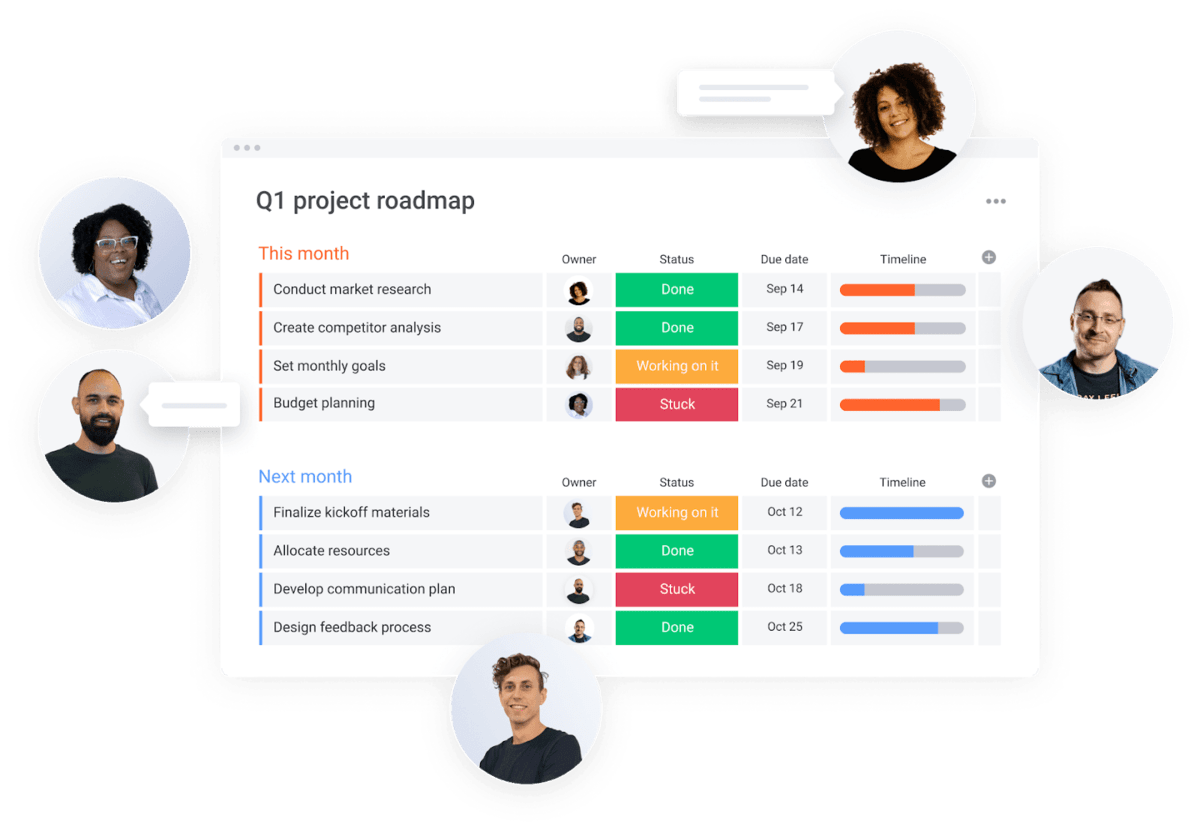
You could also include screenshots of the actual workflows you’ll implement in the platform so that every stakeholder has a clear understanding of your approach.
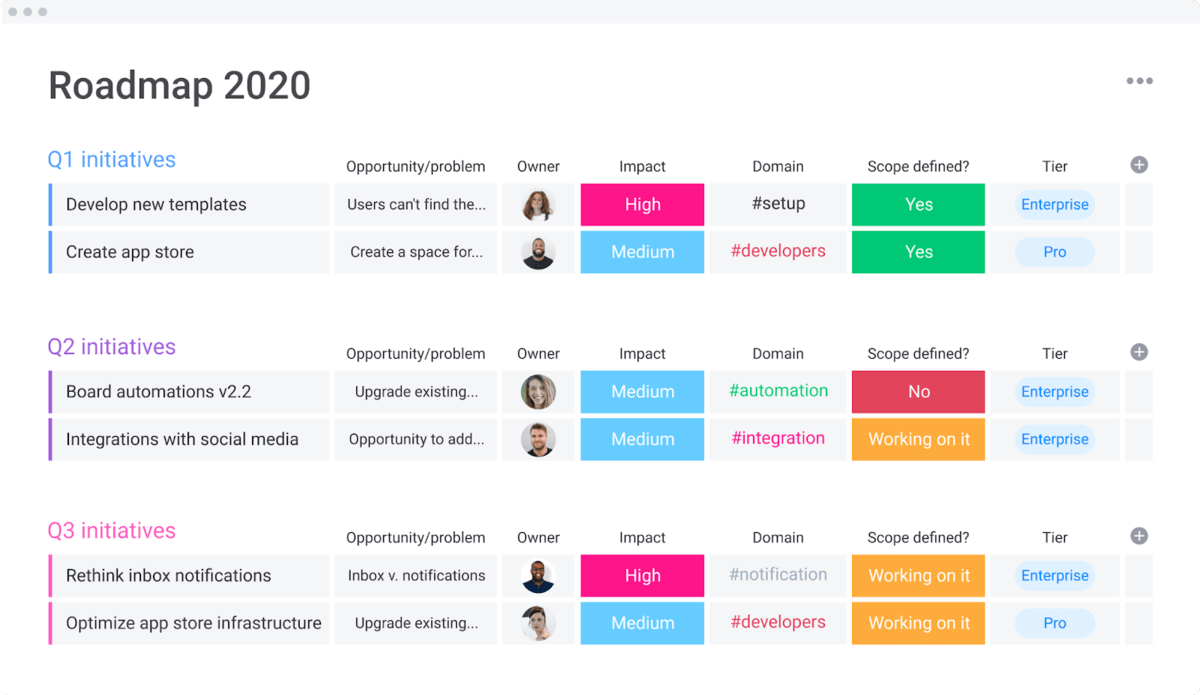
You should also add whether the platform you’ll use requires some kind of training.
For example, monday.com is pretty visual and intuitive, and you don’t need coding skills to build your workflows.
That’d be something you should definitely clarify in this section.
7. Success criteria
This section aims to lay out the criteria you’ll use to define whether a feature or product is functional. It’s also called pass/fail percentage.
For example:
“Pass percentage for existing test cases should be no less than 92%.”
8. Exit criteria
Exit criteria — also known as “suspension criteria” — refers to the benchmark you’ll use to determine whether your test should be suspended.
For example:
“If 30% of existing test cases fail, we’ll suspend the test.”
9. Deliverables
This section should include a list of all the documents you must deliver at each stage of the software testing process, including:
- Test plan
- Design specifications
- Logs
- Incidents report
- Procedure
- Test item transmittal reports
These deliverables will be your core milestones for the project.
10. Tasks and dependencies
At this point, you’ll add a description of all the tasks and activities you need to complete during the test, including dependencies.
We suggest you find robust project management software that includes task and team management features. Otherwise, this stage can grow pretty chaotic.
For example, with monday.com, you can track the completion of tasks with surgical precision. Thanks to our multiple data visualizations, you can oversee your project from start to finish with ease.
You can use our Gantt view, for example, to visualize the progression of the project, who’s responsible for what, deadlines, dependencies, and more.

11. Responsibilities
Once you’ve defined clear tasks and activities, you should assign your QA team members clear responsibilities.
Simply include a list of all the main activities involved in the test and the team member who will be responsible for each specific task.
You should also describe the process you’ll use to measure the completion of tasks to make sure you finish the test on time.
12. Training
Does your team need some kind of training to perform the test?
If so, you should describe it in this section.
For example, if your team will use a specific testing platform that requires a certain level of skill, or if the product itself is a bit complex, you should clearly define the training you’ll implement to achieve the goal.
13. Test schedule
Now that you have defined tasks and responsibilities, you should schedule such activities and forecast an estimated completion time for the overall test.
To dig a bit deeper on scheduling, we suggest you read our comprehensive guide called “How to create an effective project schedule in 6 easy steps.”
It’ll help you start on the right foot.
14. Risk and contingencies
With a schedule in place, you need to describe the potential risks involved, as well as contingencies, to make sure nothing slips through the cracks.
To simplify the process, we recommend you take a look at our fully customizable risk register template.
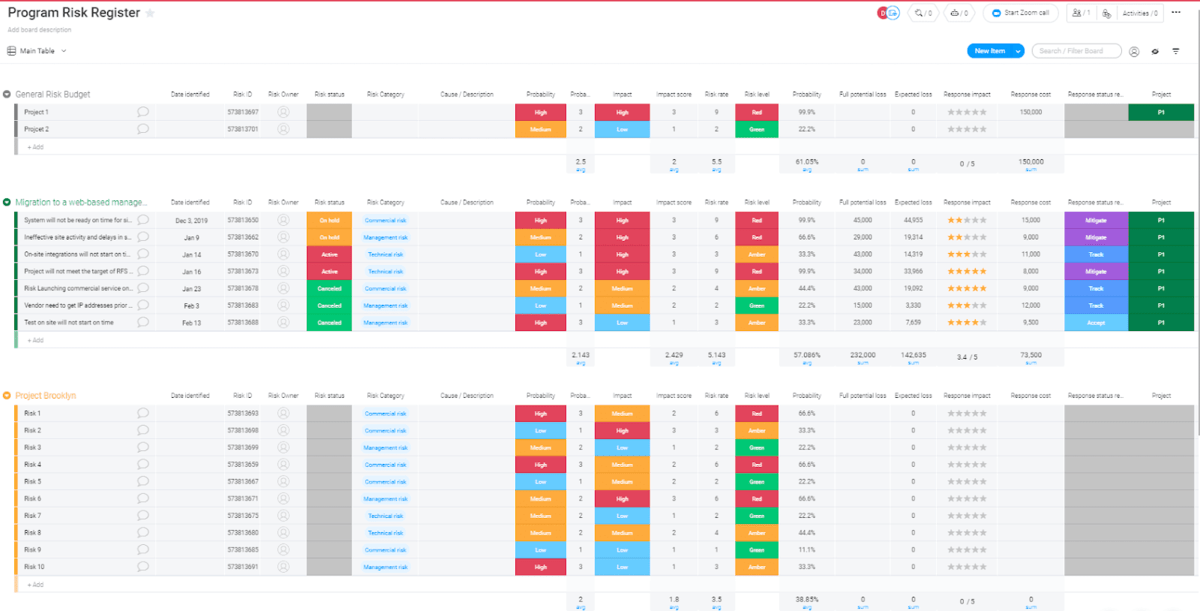
This template will help you identify risks in your project and create clear action plans to mitigate them.
15. Approvals
Finally, you should describe who will be responsible for signing off and approving testing projects.
For example:
“Project lead will review test plans and define the steps to proceed to the next level.”
How to create and manage a test plan with monday.com
As you can imagine, testing a new product or feature isn’t that simple.
There are simply too many variables involved.
If you want to make sure nothing slips through the cracks during the testing life cycle, you must tap into AI and use the right platform.
Here’s where monday.com comes in.
Let’s quickly cover what monday.com is all about and how it can help you revolutionize your testing process.
Let’s start with a basic question.
What is monday.com?
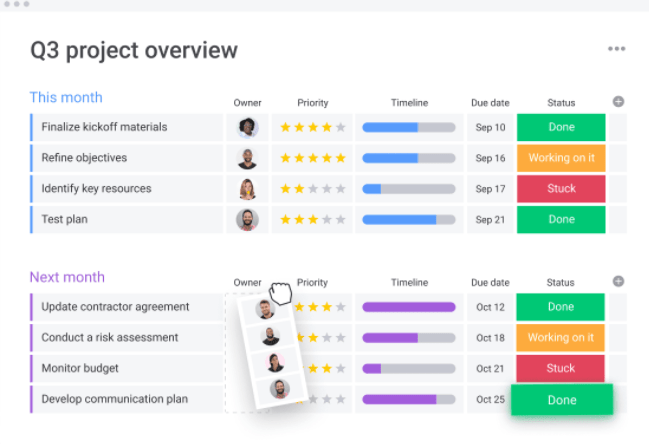
First, monday.com is more than just another “project management tool.”
To be precise, monday.com is a work operating system (Work OS). That is a platform where you can streamline any type of workflow, regardless of complexity.
Of course, you can use monday.com to manage projects, but that’s just barely scratching the surface.
In the context of software development, here are some of the things we bring to the table:
- Iteration planning: plan every iteration in real-time and manage your test team more efficiently.
- Bug tracking: get access to powerful bug tracking tools even non-devs can use.
- Backlogs: prioritize your team’s backlog and stay on top of your most critical activities.
- Product roadmaps: visually structure your workflows and keep your test team aligned during the entire process.
- Workflow automation: automate up to 250,000 human actions and increase your overall productivity.
- Integrations: integrate over 40 of your current tools and apps and centralize your work into a single place.
- Reporting: measure the progress of testing activity with precision.
Plus, there’s much more.
To get a complete picture of everything you can do with monday.com, we recommend you read our product overview page.
How to streamline your software development processes with monday.com
Thanks to our fully customizable templates, you can streamline and automate all your software development processes.
Simply install the template of your choice, fill it with your information, and voila! You’re ready to start working.
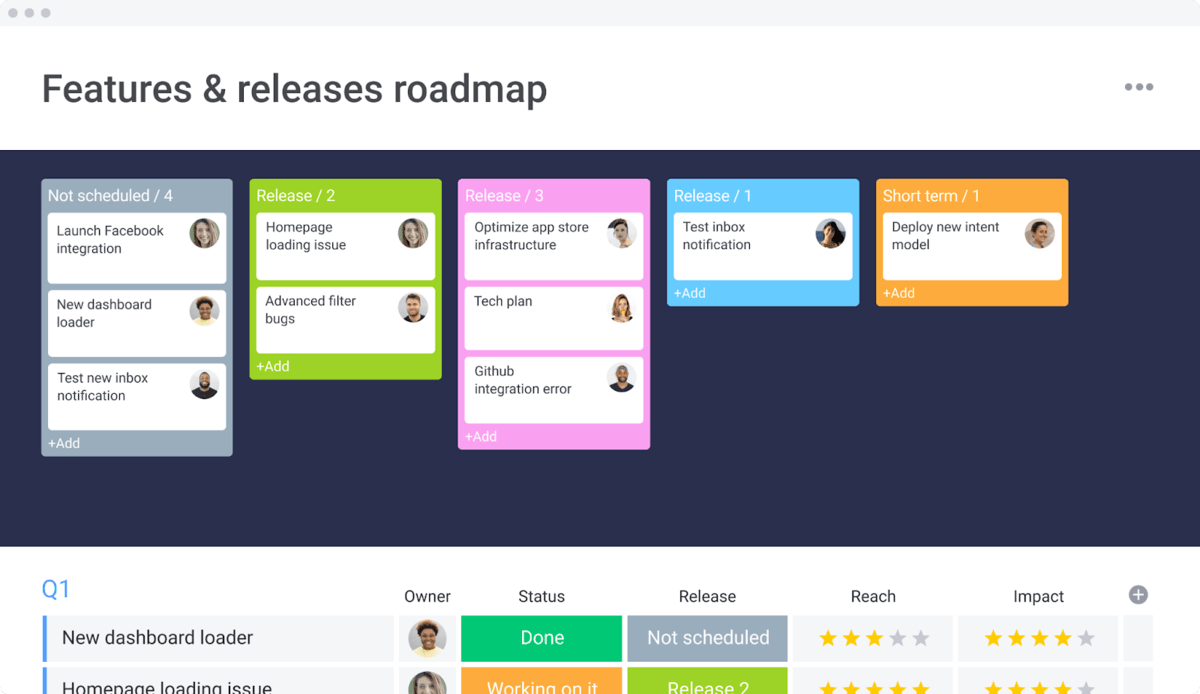
Currently, we offer over 200 templates for different use cases and industries, including software development.
Some of our most popular templates include:
Ready to create your own testing plan?
A solid test plan will guide you through the entire testing process and help you spot potential threats and errors before actually releasing a feature.
Hopefully, now you have enough information to create yours.
And if you’re looking for a platform that helps you streamline the testing process and produce better results, then monday.com might be a good fit for you.
To see for yourself, we suggest you try our fully customizable features and releases roadmap template. It’ll help you start your testing journey off on the right foot.
